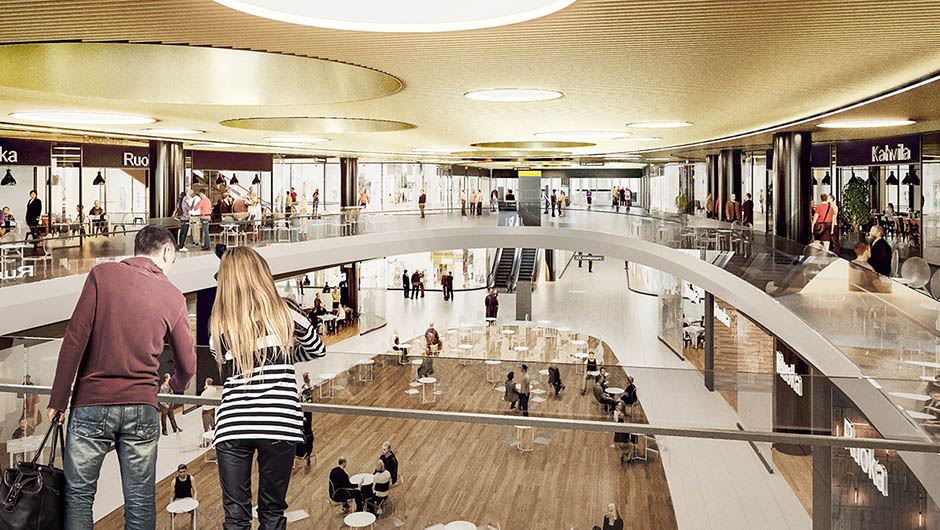Finding the right direction for business development by co-creating with stakeholders
- Retail
- Retail Industry Insights
- 6/7/2018
In-store meets online – this is why physical stores still rule in the digital era
Digitalisation will kill off the traditional forms of retail. Brick-and-mortar is the underdog of the online shopping era. Two retails myths that stick – for no reason. We re-evaluated the myths with a digitalisation researcher.

”The public discussion around the digitalisation of retail resembles that around organic food: much ado about nothing. Even though both keep popping up in headlines repeatedly, in the big picture, they are minority trends”, says digital retail expert Arhi Kivilahti. Kivilahti has done research on digitalisation for nearly fifteen years – first ten years at Aalto University and a year at Oxford, then a brief stint at digital business consultancy Solita and some years as Digital Development Director at the Finnish grocery chain Kesko.
The market share of online retail differs from one country to another, but Kivilahti is particularly familiar with the situation in the UK. The Office for National Statistics estimates that the share of online retail is somewhere between 13 to 15 per cents of all sales in the UK. To be able to make sense of the figure, it is however important to take a closer look at it.
”Many view digitalisation from a very narrow perspective. The public discussion mainly revolves around the most basic form of online retail where you order something from a warehouse and get it delivered to straight your doorstep. Think Amazon, for instance. In fact, this type of online business is quite trivial.”
Indeed. Even in the UK, one of the most advanced countries when it comes to digital retail, only half of all online sales consist of digital operations from retailers that do not keep physical stores. That means no more than 6 per cent of the country’s entire retail market. Kivilahti also maintains that the number is actually on the decrease as many retailers that started with online only now expand to in-store by opening brick-and-mortar outlets.
Online success doesn’t come quick. Those who make it usually have a track record of also doing well at traditional in-store retail – and a history of investing in digitalisation for years. When asked for examples Kivilahti refers to Tesco, aptly described as the world’s biggest online retailer of food. Tesco’s online sales amount to about half of the international giant Amazon’s turnover, while Tesco only focuses on one sector nationally. Tesco’s success has been built on nearly two decades of work on digital operations but the chain hasn’t neglected its traditional in-store business while investing in online.
Web is a good servant but a poor master
Business people have always known that the key to a good sale is to take the brand where the people are and create meaningful encounters with the potential customers, Kivilahti describes. The platform doesn’t make a difference as long as the encounters are recurring and consistent enough to create brand loyalty. Way before the wake of the digital sphere, from IKEA catalogues to television campaigns and retail spaces to billboard ads, marketers have always used different media to complete this mission. The main mechanism remains the same – the only difference is that now there are simply more platforms for making encounters happen.
”Where there are people there will be business. It’s not up to retailers to dictate which platforms their customers should prefer. In the changing business environment of online plus in-store retailers should work as enablers who make running errands and completing transactions as easy as possible. Customer behaviour will determine whether we succeed at it or not”, Kivilahti analyses. Kivilahti argues that digital services are a good bonus if built on well-functioning in-store operations – but investing in them can’t redeem the situation if the basis of the business is shaky.
”Consultants in particular like to equate bad sales with difficulties in operating in the changing digital landscape. Too often they advise retailers to invest in online operations, to no avail. If the basic business logic of a business is flawed, going digital will prove to be expensive and useless.”
Kivilahti assures that, as a matter of fact, the biggest change in the Finnish retail industry during the past ten years hasn’t been digitalisation but instead, price-led campaigning – read: decreasing prices – brought about by global economic turmoil. The laws of selling won’t change even if the world around them does: appropriate pricing, good variety and convenience are the holy trinity of business success whether operating online, in-store or both.
Experiences and effortlessness attract consumers to malls
There is something about brick-and-mortar boutiques and shopping malls that online stores can’t compete with: the atmosphere and experiences that take place through encounters in a physical environment. Buying music with just a click of the mouse is easy but music aficionados might value a physical copy of an LP record over the ease of online – not to mention what it means to an emerging artist to see their album stocked in a music store.
”Consuming experiences is not a new phenomenon. On the contrary, it became a hot topic as early as in the beginning of the 20th century, the golden age of the department store. But even today the theme stays relevant. People need experiences.”
Our craving for experiences goes hand in hand with our taste for convenience. More and more groceries are sold online, but simultaneously people spend less and less time planning their food shopping. Instead of a big grocery haul many pop in to a shop multiple times a week to make smaller purchases.
”If you start planning your dinner no earlier than at noon the same day, it is crystal clear that online food retailers don’t stand a chance when compared to physical stores. Online will by no means kill off in-store.”
When in-store business is concerned, shopping malls stand strong in Finland – not least because of the chilly climate – Kivilahti estimates. Retail experts have always stressed location as a key success factor, but Kivilahti prefers the term accessibility. Even if situated in a perfect location, a shopping mall won’t succeed unless it’s easy to come to. The less the customer has to cross roads or drive through roundabouts, the more approachable the mall feels. In research this ease is often referred to as shopper missions.
”A retailer must understand the wants and needs of its customers and respond to them in the easiest way possible. It’s an age-old belief that idling around creates the urge to make impulse purchases but I disagree. The easier it is to operate the more likely people are to buy what they want and need.”
The Mall of Tripla is designed with experiences in focus and it’s situated in the best possible location in Finland. What else is there to ask for? Kivilahti has one piece of advice:
”Be flexible. Nobody knows where the world is headed, so the more flexible the physical spaces are designed, the better they will serve retail needs in years to come. This is not the first time retail and technology are going through a rapid transformation. Those who know how to make use of the change will be the winners of tomorrow,” Kivilahti sums up.
Mall of Tripla is truly the mall of the future. With emphasis in experiences, the mall offers services themed into five different sections in five different floors. Food, fashion, entertainment, culture… whatever your customer wants and needs, they will find it in Mall of Tripla. The mall is easily approachable in the middle of the new Tripla redevelopment in Pasila. Mall of Tripla will become the heart of Helsinki’s second city centre, located in the intersection of public transportation and traffic.
Visit Mall of Tripla's website



